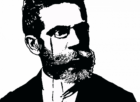Edgar Allan Poes The Raven: A Masterpiece of Gothic Literature Explored

[ tag]
[h2 tag] Introduction: Unraveling the Enigma of “The Raven”

“The Raven” is a hauntingly captivating poem that showcases the dark and brooding genius of American writer Edgar Allan Poe. First published in 1845, this iconic work of Gothic literature has enthralled readers for generations with its eerie atmosphere, melancholic themes, and mesmerizing narrative.
[h2 tag] Understanding “The Raven”: Key Points for Enthusiasts
For those with a general interest in “The Raven,” it is important to delve into the heart of the poem’s haunting allure. The story revolves around a narrator who is mourning the loss of his beloved Lenore. In the depths of his despair, a raven with a supernatural quality visits him repeatedly, bringing sorrow and despair. The raven’s single-word refrain, “Nevermore,” becomes an enigmatic symbol of the protagonist’s descent into madness.
To fully appreciate the depth and complexity of “The Raven,” three primary elements should be noted:
1. Symbolism: Poe masterfully employs symbolism throughout the poem. The raven itself represents a direct connection to the supernatural, while the midnight hour symbolizes the darkest depths of human emotion. The chamber where the narrator finds himself trapped symbolizes his tortured mind.
2. Language and Sound: “The Raven” showcases Poe’s mastery of language and rhythm. The repetitive rhymes and the poem’s overall flow create a hypnotic effect, drawing readers into the narrator’s spiraling obsession. The carefully chosen words, such as “dreary,” “nevermore,” and “Lenore,” evoke a sense of melancholy and despair.
3. Psychological Themes: Poe’s exploration of the human psyche is evident in “The Raven.” The narrator’s descent into madness and obsession with his lost love mirrors Poe’s own struggles with grief and mental illness. This makes the poem an intensely personal and introspective work.
[h2 tag] Historical Evolution: “The Raven” as an Enduring Icon
Throughout history, “The Raven” has evolved from a highly acclaimed poem to a cultural icon. Initially published in the New York Evening Mirror in 1845, the poem instantly captivated readers with its haunting subject matter and lyrical style. Its immediate success established Poe as a prominent figure in American literature.
Over time, “The Raven” has been embraced by various artistic mediums. It has been adapted into paintings, music, and even film. Notably, French symbolist painter Édouard Manet’s painting “The Raven” captures the essence of Poe’s poem through its evocative imagery. The painting’s stylized depiction of a raven perched menacingly on a skull serves as a visual representation of the poem’s themes.
In addition to visual adaptations, the musical world has also found inspiration in “The Raven.” Renowned composers like Sergei Rachmaninoff and Jean Sibelius have incorporated elements of the poem in their respective compositions, further amplifying its lasting influence.
Furthermore, “The Raven” still resonates with contemporary audiences, finding its way into popular culture. It has been referenced and parodied in various forms of media, solidifying its status as a cultural touchstone.
[h2 tag] Conclusion: The Enduring Legacy of “The Raven”
“The Raven” stands as a testament to Edgar Allan Poe’s unparalleled ability to explore the depths of human emotion and the lurking darkness within us all. With its profound symbolism, mesmerizing language, and haunting themes, this masterpiece continues to captivate and provoke introspection.
Aspiring collectors and admirers of art and literature would do well to immerse themselves in the mysterious world of “The Raven.” Its enduring legacy and profound impact on both the literary and artistic realms make it a valuable addition to any collection. Let “The Raven” and its eerie enchantment serve as a haunting reminder of the enduring power of Gothic literature.











